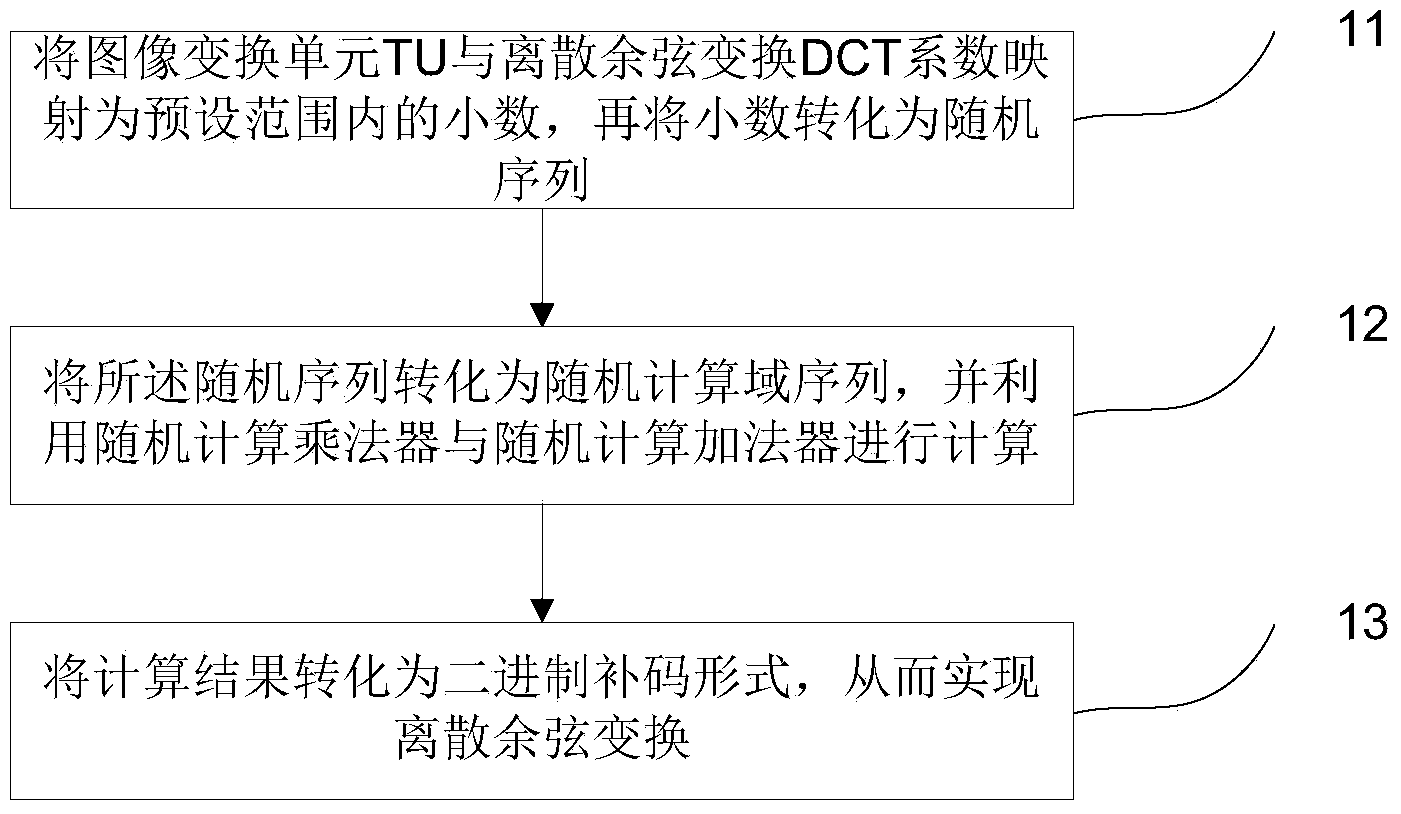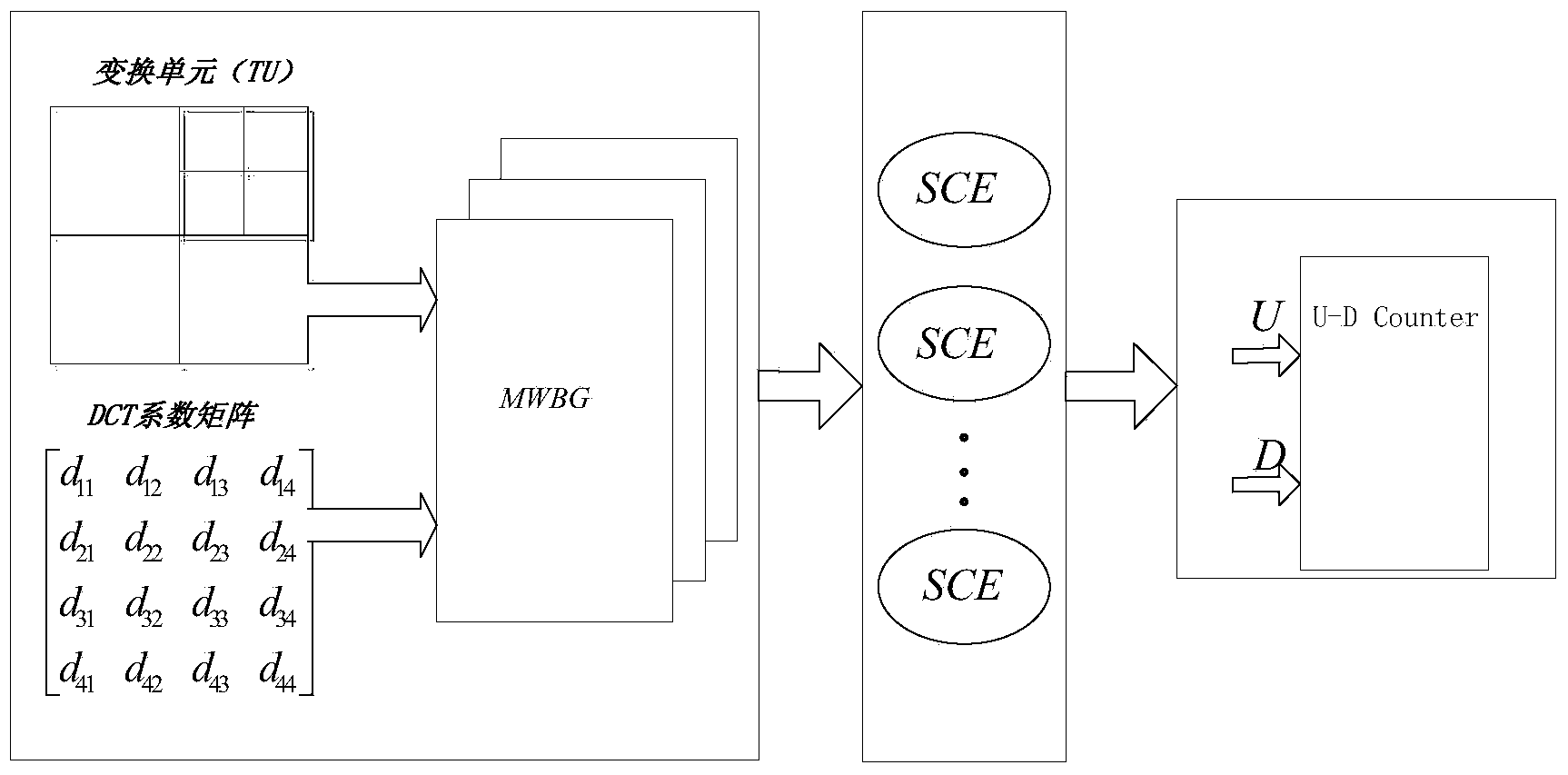Discrete cosine transform (DCT) implementation method and system based on randomized computation
A technology of discrete cosine transform and random calculation, applied in complex mathematical operations, electrical components, digital video signal modification, etc., can solve cumbersome shift and addition operations, etc., to improve circuit operating clock frequency, increase throughput, simplify The effect of hardware implementation
- Summary
- Abstract
- Description
- Claims
- Application Information
AI Technical Summary
Problems solved by technology
Method used
Image
Examples
Embodiment 1
[0052] figure 1 It is a flow chart of a random calculation-based discrete cosine transform implementation method provided by Embodiment 1 of the present invention. Such as figure 1 As shown, the method mainly includes the following steps:
[0053] Step 11. Map the image transformation unit (TU) and discrete cosine transform (DCT) coefficients into decimals within a preset range, and then convert the decimals into random sequences.
[0054] For the convenience of understanding the present invention, the specific implementation process can also refer to the appended figure 2 The block diagram shown.
[0055] Specifically, this step is to convert the data and DCT transform coefficients in the TU into decimals in the [0,1] or [-1,1] interval, and then generate the corresponding TU and DCT transform coefficients through the binary weight generator Random sequence, and carry out the cyclic shift of different digits to the random sequence in order to reduce the correlation; it c...
Embodiment 2
[0086] Figure 7 It is a schematic diagram of a discrete cosine transform implementation system provided by Embodiment 2 of the present invention. Such as Figure 7 As shown, the system mainly includes:
[0087] The data mapping unit 71 is used to map the image transformation unit TU and discrete cosine transform DCT coefficients into decimals within a preset range, and then convert the decimals into random sequences;
[0088] Random computing core unit 72, used for converting said random sequence, and utilizing random computing multiplier and random computing adder to calculate;
[0089] The result conversion unit 73 is configured to convert the calculation result into a two's complement form, so as to realize discrete cosine transform.
[0090] It should be noted that the specific implementation manners of the functions implemented by the various functional modules included in the above system have been described in detail in the previous embodiments, so details will not ...
PUM
 Login to View More
Login to View More Abstract
Description
Claims
Application Information
 Login to View More
Login to View More - R&D Engineer
- R&D Manager
- IP Professional
- Industry Leading Data Capabilities
- Powerful AI technology
- Patent DNA Extraction
Browse by: Latest US Patents, China's latest patents, Technical Efficacy Thesaurus, Application Domain, Technology Topic, Popular Technical Reports.
© 2024 PatSnap. All rights reserved.Legal|Privacy policy|Modern Slavery Act Transparency Statement|Sitemap|About US| Contact US: help@patsnap.com










